The knowledge that provides understanding of this world and how it works, is science.
Systematic knowledge of the physical or material world gained through observation and experimentation is called science.
One of the most important contributions Muslims have made to society is in scientific discovery. In fact, many modern scientists are inspired by the work done by Muslim scientists from centuries ago.
Muslim Period 600-1600 AD
The science grew and flourished in early civilizations of the world. The
The Egyptians, the Greeks, the Romans and the Muslims contbuted much to the science. The Musliis made a rich contribution to the knowledge in science.
They spread like shining stars on the horizon of the world of science
They made effective and invaluable services in the field of science. This period of Muslims is almost 1000 years long (600-1600 AD).
Muslims laid the foundation of the laboratory methods. These methods are still used in modern science.
The Muslim scientists discovered many elements e.g. Arsenic (As), Antimony (Sb) and Bisrmuuth (Bi) etc.
They developed and used many laboratory instruments eg funnels, crucible etc. Many new chemical processes were also introduced by
Muslim scientists e.g. filtration, fermentation, distillation etc. Thus, this period provides basis for the modern chemistry. The period of Muslims is called the period of AI-Chemists" in the history of chemistry. Muslims scientist presented science as purely "experimental or practical science". Some well known Muslim scientists and their achievements are mentioned here.
Jabir Ibn Hayyan (721-815)
A Pioneering Islamic Alchemisth
Jabir Ibn Hayyan is generally known as the father of chemistry. He was probably the first scientist who had a well established laboratory. He invented experimental methods such as distillation, sublimation, filtration, extraction of metals etc. He prepared Hydrochloric acid, Nitric acid and white lead.
Jabir Ibn Hayyan was an influential Muslim scientist believed to be the author of the Jabirian Corpus. This text focuses on religious philosophy, alchemy, and magic.
Jabir is also credited with being one of the first people to systematically classify chemical substances. This was an important step in the development of modern chemistry and medicine.
Muhammad Ibn Masa al-Khwarizmi (780-850)
Father of Algebra
Muhammad ibn Musa Al-Khwarizmi was a Muslim scientist best known for coming up with the completing square method of solving quadratic equations.
In his home country of Iraq, Khwarizmi was a prominent mathematician who wrote about algebraic equations and how to solve them. He also wrote on trigonometry, geography, astronomy, and other subjects.
Khwarizmi is considered one of the fathers of algebra due to his work on the methods of solving quadratic and linear equations. He was also the first person to view algebra as an independent discipline.
Khwarizmi's work by him helped introduce the decimal number system to Europe when translated into Latin.
Yaqub Kindi (800-873)
Pioneer of reflection of light
He was born in Basra, Iraq. He produced extensive research monographs work was done in the field, especially on reflection of light.
Thabat Ibn Qurra (836-901)
A Reformer of Ptolemaic Astronomy
Thabit ibn Qurra was a Turkish mathematician and astronomer notable for reforming the Ptolemaic system. He also contributed to mechanics, algebra, and geometry.
His work on astronomy, particularly regarding the Ptolemaic system, paved the way for a new model to describe the solar system.
Claudius Ptolemy developed the Ptolemaic system. It proposed geocentrism to explain the motion of celestial bodies around Earth using mathematical models.
Thabit ibn Qurra discovered that a sidereal year has 365 days, 6 hours, 9 minutes, and 12 seconds. This discovery led Nicolaus Copernicus to discover that the Earth rotates around the Sun instead of vice versa (called heliocentrism).
Al-Battani (858-929)
Ptolemy of the Arab World
Al-Battani was a mathematician and astronomer born in modern-day Turkey. He's best known for being the first person to discover how the solar eclipse occurs. Al-Battani figured out that it's caused by the moon being between us and the sun.
He also introduced sines and several trigonometric relationships that mathematicians use today.
Mohammed ibn Zakariya Al-Razi (865-935)
A Pioneer in Medicine
Al-Razi was a Persian physician chemist and philospher. He wrote 26 books but the most famous book was Al-Asrar. In this book, he discussed the different processes of chemistry. He was the first chemist to divide the chemical compounds into four types and also divide the substance into living and non-living origin. He prepared alcohol by fermentation.
He is most notable for pioneering medical science.
He is also credited with being the first person to distinguish between smallpox and measles. Even though he achieved this feat, Al-Razi didn't have much luck convincing anyone that he was right about it—people just thought he had gone crazy.
He's also known for writing the first pediatrics book, and he taught students how to treat patients.
Al-Razi was one of the earliest experimentalists in medicine. He believed that symptoms were not caused by magic or spirits.
His most important contribution from him was his dedication to empirical evidence instead of superstition or relying on prior knowledge. He believed that everything should be tested before being accepted as fact.
Abu Nasr Al-Farabi (872-951)
One of The Greatest Ancient Islamic Philosophers
Abu Nasr Al-Farabi was a Muslim philosopher, mathematician, and cosmologist. He is best known for his works in logic, metaphysics, political philosophy, and ethics.
Al-Farabi was born in present-day Afghanistan when the Islamic empire was expanding rapidly across Asia. As a result, he was exposed to different cultures from an early age.
This Muslim scientist is considered one of the greatest thinkers of the Islamic Golden Age. He was also a pioneer in sociology, psychology, and political philosophy.
Abu Hanifa ad-Dinawari (895-902)
Father of Arabic Botany
Abu Hanifa ad-Dinawari was a Persian polymath and the author of the Book of Plants. He is notable for his contributions to mathematics, astronomy, and botany.
Dinawari pioneered Arabic botany by creating an index that documented all the different types of plants.
His plant book by him was one of the most important works on botany in the medieval Islamic world. It consists of six volumes and more than 600 pages.
This treatise contains information about plants—their names, and characteristics.
Ad-Dinawari was also one of the first Muslim scientists to examine the relationship between astronomical concepts and plants.
Abul-Qasm Ammar Ibn Ali al-Mosli (900-1000)
The inventor of the hypodermic syringe
Ammar ibn Ali Al-Mawsili was an Arab ophthalmologist known for inventing the hypodermic syringe.
He used this hollow needle to remove cataracts from patients' eyes. This allowed him to perform surgery on their eyes without damaging any of their other organs.
Inventing the hypodermic syringe was not just one of his many accomplishments—it was a milestone in the history of medicine.
Kitab al-Muntakhab fi ilm al-Ayn wa Mudawatiha bi'l Adwiya wal Hadid (Book of Choices in the Treatment of Eye Disease and Its Medicines and Medical Instruments), deals with anatomy, pathology and describes six case histories for cataract surgery and a case of optic neuritis.
Al-Hasan Ibn Al-Haytham (965-1039)
Father of Modern Optics
Hee was Born in Basra , Iraq during the Islamic Golden Age, Ibn Al-Haitham is best known for paving the way for modern scientists.
He produced extensive research monographs on metrology, specific gravity and tides.
His Book of Optics named Kitab ul Manazir was one of the most important works on optics ever written. It offered a new understanding of light and vision.
He also considered as the inventor of pin-hope camera.
Al-Hasan is also known for pioneering the scientific method. This process involves careful observation and experimentation to test hypotheses about how things work.
Today, scientists use the scientific method to study a wide range of topics. It has helped us to understand everything from the solar system to human behavior.
In the field of Chemistry, he understood the different chemical procedures and chemical combinations.
He determined the densities of different substances.
Al Beruni (973-1048)
Shape of earth shape and phases of sun and moon
He is Afghan scholar and wrote about 150 books on Physics, cosmology, geology, culture, archeology, and medicine.
Al Beruni discussed the shape of earth the movement of sun, moon and phases of moon.
Ibn Sina (980-1037)
Father of Medicine
Ibn- sina is generally known as the Aristotle of the Muslim's world.
Abu Ali Ibn Sina, or Avicenna as he was known in the West, was a prominent Muslim scientist. He was a physician and philosopher who wrote on several topics, from alchemy to medicine.
He is famous for his contributions in the fields of Medicine, Mathematics, Astronomy, Medicinal chemistry and philosophy.
He is the first scientist who rejected the idea, that base metals can be converted into Gold.
He wrote more than hundred books. These books taught in Europe for centuries.
His notable books by him include The Book of Healing and The Canon of Medicine. Medieval universities used his books of him as standard medical texts until the Renaissance. Avicenna's work by him was so influential that he became known as "the most famous physician of the Islamic Golden Age" by historians.
Ali Ibn As al-Kahhal (1010-1038)
was a pioneer in Waftalmullah
Ali ibn Isa al-Kahhal was an ophthalmologist who made his mark in medieval science. His book Memorandum of the Occultists was one of the most influential texts during this time. It covered many eye diseases and their treatments.
In addition to providing information about specific eye disorders, Isa al-Kahhal also illustrated the anatomy of the eye itself.
This talented scholar is often credited with helping bring ophthalmology into its modern form. His work on this subject predates that of many European scientists by hundreds of years. It shows just how advanced Islamic science was during this period.
Ismail al-Jazari (1136-1206)
Father of Robotics & Inventor
Al-Jazari was a scholar and polymath who lived in the 12th century. He is noted for his work in many fields of science, including robotics and mechanical engineering.
In addition to being an astronomer, he was also an inventor who developed the first elephant clock and other devices that were used during the Arab civilization.
Al-Jazari's work in engineering began with a handbook for building devices. This text is known as “The Book of Knowledge of Ingenious Mechanical Devices.” It contains detailed descriptions of 50 mechanical devices used during his time and instructions on how to build them.
Besides these significant contributions to engineering, Al-Jazari developed several other types of innovative devices. This work set the stage for the first robot.
Ibn al-Baytar (1197-1248 AD)
The Man Who Recorded Medieval Medicine
Ibn al-Baytar was an influential Arab physician and botanist from the Middle Ages. Not only was he an expert in Arabic medicine, but he also had a great knowledge of plants and their medicinal properties.
In his time, Ibn al-Baytar was one of the most well-known Muslim scholars. He wrote many books on the subjects that interested him, including medicine and botany.
Ibn al-Baytar's work is used today by modern researchers studying medieval medicine and science.
Ibn al-Nafis (1213-1288)
Father of Pulmonary Circulation of Blood
Ibn al-Nafis was an Arab polymath and physician who lived in the 13th century. He is notable for contributing to medical science and Islamic philosophy. Many modern medical practitioners continue to cite his work to this date.
Al-Nafis produced the world's first description of pulmonary blood circulation. He discovered that pulmonary blood circulation begins at the heart's right ventricle and continues through capillaries in the lungs before returning to the left atrium via pulmonary veins.
Al-Nafis also described how blood passes through capillaries between arteries and veins (known as capillary circulation).
Ibn Khaldun (1332-1406)
Social scientist
One of The Greatest Social Scientists of Medieval Islam
Ibn Khaldun was an expert in Islamic social sciences. He is notable for popularizing the Islamic perspective on sociology, historiography, demography, and economics.
As an Islamic scholar, Ibn Khaldun helped Ottoman historians analyze the Ottoman Empire.
He also wrote on various topics of history, such as politics and economics. His book of his titled Introduction provided valuable information on how to study history and how it is related to other disciplines such as sociology and economics.
Piri Reis (1465-1553)
Navigator & Cartographer
Piri Reis was a Turkish navigator and cartographer who lived in the 16th century. He's notable for making one of the oldest maps known today, which detailed the coastlines of Africa and Europe.
His text Book of Navigation described navigational techniques and ports along the Mediterranean Sea.
Piri Reis had access to some of the most advanced scientific knowledge of his time about him. I have used it to create maps that are still resourceful.
Famous Pakistani scientists of current era
Mohammad Abdus Salam (1926-1996)
Presenter of Electroweak unificationt theory
(29 January 1926- 21 November 1996), was a Pakistani theoretical physicist. A major figure in 20th century theoretical physics, he shared the 1979 Nobel Prize in Physics with Sheldon Glashow and Steven Weinberg for his contribution to the electroweak unification theory.
He was the first Pakistani to receive a Nobel Prize in science.
Abdul Qadeer Khan (April 1936-10 October 2021)
Father of Pakistani Atomic bomb
Dr. Abdul Qadeer Khan known as A. Q. Khan (born in 27 April 1936 bhopal India) is a Pakistani nuclear physicist and a metallurgical engineer, who founded the uranium enrichment program for Pakistan's atomic bomb project. He founded and
Established Kahuta Research Laboratories (KRL) in 1976, and served as both its Senior Scientista nd Director-General until he retired in 2001.
Pakistan become 1st Muslim and 7th nuclear power in the world because of dr khan in 28 may 1998 with testing of seven nuclear blast in Balochistan chagi.








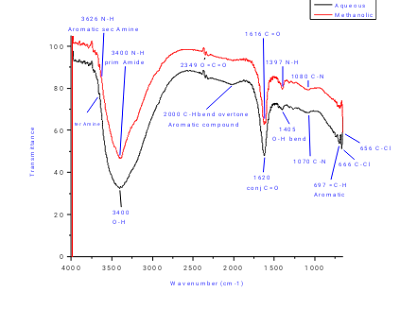
.jpeg)


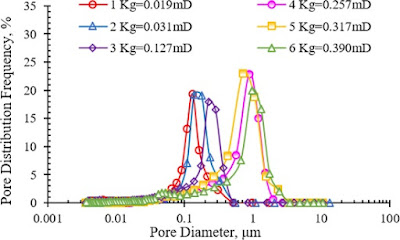


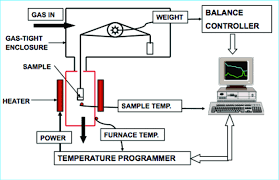
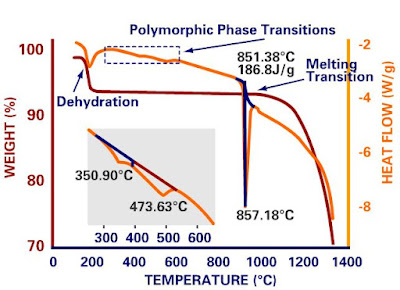


-02.jpeg)
.jpeg)
-01.jpeg)
.jpg)
.jpeg)
-01.jpeg)

_(AD_865_-_925)_Wellcome_L0005053_(cropped)-01.jpeg)


.jpeg)
-01.jpeg)
-01.jpeg)
-01.jpeg)
-01.jpeg)
-01.jpeg)
-01.jpeg)
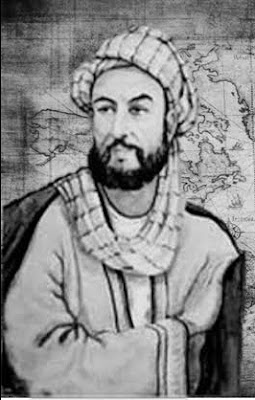
-01.jpeg)
-01.jpeg)
.jpeg)
.jpeg)

.jpeg)
-01.jpeg)